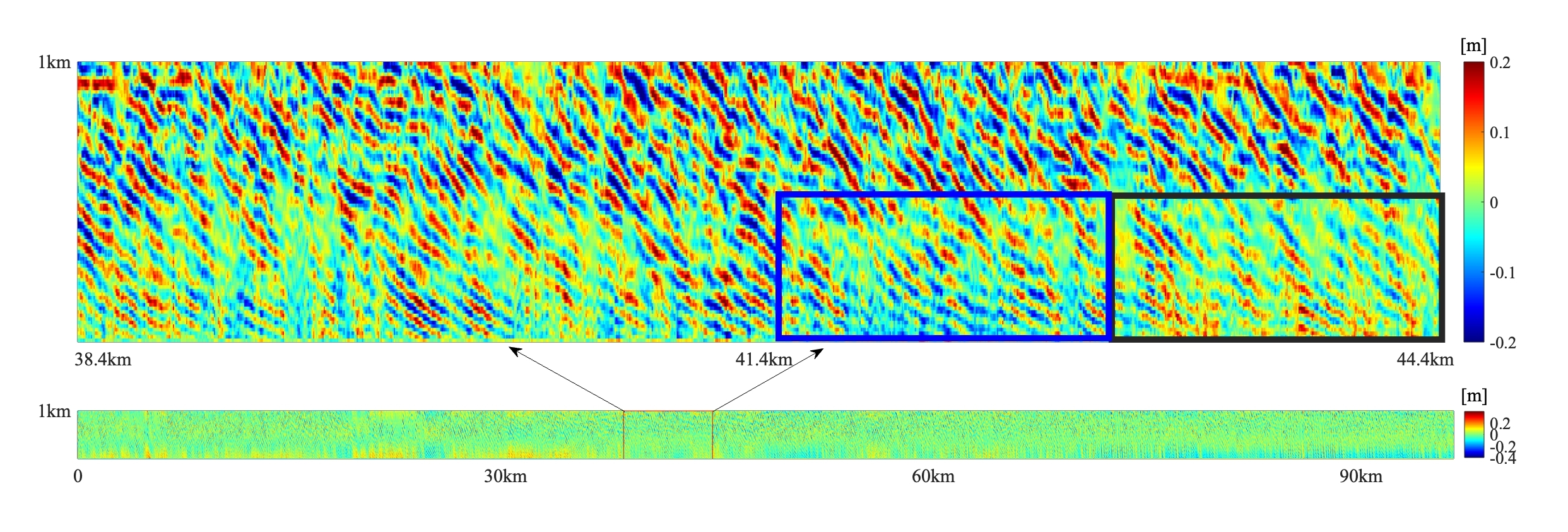
A research team led by Prof. XU Yongsheng from the Institute of Oceanology of the Chinese Academy of Sciences has obtained the two-dimensional sea surface height anomaly (SSHA) of about 100 km along the track and the first broadband SSHA wavenumber spectrum using Airborne Interferometric Radar Altimeter (AIRA) observations.
The study was published in Remote Sensing on Apr. 12.
To date, humanity has not been able to observe two-dimensional (2D) oceanic processes at the 0.1-10 km submesoscale in the spatial domain using remote sensing. The SSHA signal at this scale is small and exceeds the resolution limits of the satellite altimeters used to date. However, oceanic processes at this scale play a critical role in the study of ocean energy transfer, cascading, and dissipation, and are crucial for research on ocean energy balance, nutrient transport, and global climate change studies.
In this study, the researchers provided a detailed analysis of the SSHA and its wavenumber spectrum obtained by AIRA, and demonstrated the potential of AIRA for submesoscale SSHA observations. The AIRA shows a good ability to capture small-scale SSHA. In the enlarged image, waves with wavelengths between 50 and 150 m stand out as the most dominant feature. The submesoscale SSHA typically has much smaller magnitudes than ocean waves.
Nevertheless, it is clear that the waves are superimposed on a background characterized by undulating heights. AIRA's spectrum has a distinct negative slope down to about one km, consistent with theoretical predictions. AIRA's resolved power spectral density level in the one-ten km submesoscale range is about ten times lower than that of ICESat-2 ATL03, demonstrating AIRA's superior ability to resolve lower energy SSHA variations. The wavenumber spectrum is an important basis for evaluating the observational performance of AIRA.
"The results of this study highlight the tremendous potential of AIRA in detecting SSHA at a range of scales from oceanic waves to submesoscale," said HE Jinchao, first author of the study.
"We expect that our study will inspire a new appreciation for the potential of AIRA in detecting two-dimensional small submesoscale SSHA," added Prof. XU, corresponding author of the study. "These processes are critical to understanding ocean dynamics, marine ecosystems, and their role in the Earth's climate system."

2D SSHA from the IRA measurements. (Image by XU Yongsheng)

Comparison of the SSHA wavenumber spectrum observed by AIRA (in red) with the SSHA wavenumber spectra from satellite altimeters ICESat-2, SARAL/AltiKa, and Sentinel-6A. (Image by XU Yongsheng)

86-10-68597521 (day)
86-10-68597289 (night)

52 Sanlihe Rd., Xicheng District,
Beijing, China (100864)

